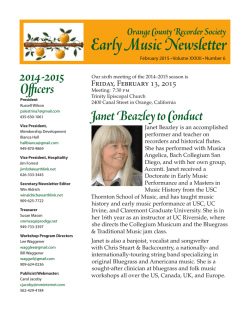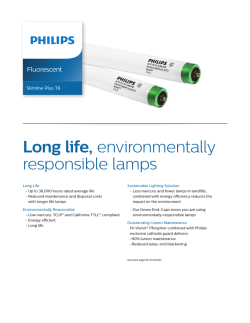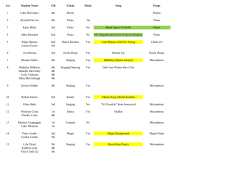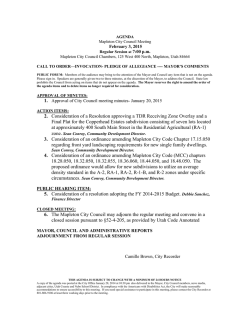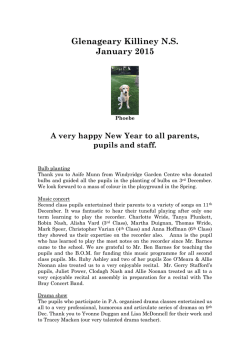
TRANSCRIPTION DIGITAL RECORDER FACE-OFF
1 TRANSCRIPTION DIGITAL RECORDER FACE-OFF Philips DPM8000 vs Olympus DS-7000 & Grundig Digta 7 7 January 31, 2015 Introduction: While preparing to review the new Philips DPM8000, it occurred to me that the most effective way to do so would be in the context of the other top rated transcription digital recorders. Note that when you purchase a digital recorder from KnowBrainer Inc., you additionally receive a hard copy of our exclusive Digital Recorder User Guide which includes pictorial step-by-step instructions on how to create a digital recorder profile, setting up your recorder, transcribing your recordings and setting up the Dragon AutoTranscribe Folder Agent for effortless batch file transcription of multiple recordings with no end-user intervention other than effortlessly connecting your recorder to a USB port. Note that this feature is only available in Dragon Pro, Medical (DMPE), and Legal. The following review consists of 3 parts: (1) My personal take on the evolution of professional dictation digital recorders (2) The Pros and Cons of what a general consensus of many top speech recognition experts believe to be the top three digital recorders (3) My personal assessment of what the numbers mean If you wish to skip past the brief microphone history, click Pros and Cons. If you wish to skip further ahead to my conclusions, click recommendations. 2 Evolution of Speech Recognition Recorders When we first began using DragonDictate speech recognition software in the 1980’s it seemed to be incredibly impressive technology. Never minding the very deliberate pause after each and every word, we waited with baited breath to see another (hopefully correct) word miraculously appear on our somewhat blurry little screens. It was fun! It was frustrating! In 1996, NaturallySpeaking continuous speech recognition was released. With the emergence of this new technology, we had a viable tool for professional as well as personal use. That being the case, we needed something better than the usual classic cassette recorder to better utilize this increasingly more sophisticated software and several manufacturers responded. The 1st digital recorder we were able to test was called the VoiceIt which was manufactured directly for DragonSystems (previous owner of NaturallySpeaking). Olympus released the DS-1000 on the heels of the VoiceIt and followed up a year later with the DS-2000. We found the DS-2000 to be fair but the VoiceIt and DS-1000 fell below our level of acceptability. Eventually, Olympus took a decisive recorder lead when they introduced what we considered to be the 1st serious professional recorder, the DS-3000 and the consumer grade DS-330. Both units featured DSS algorithms which were designed for speech recognition but limited to 5 kHz frequency response. Philips eventually improved on this technology by releasing the 1st DSS Pro (DS2) algorithms with an 8 kHz frequency response in the Philips DPM 9600 recorder. Olympus didn't get around to releasing the DS-5000, featuring DS2 algorithms, until 9 months later. A few years later, Grundig introduced their Digta 7 series and on April 17, 2012, Olympus released their 4th generation professional digital recorder, the DS-7000. On July 2, 2013 (approximate release date) Philips released the long-awaited replacement for the 9600; the DPM8000 and the race continues… There are literally several hundred digital recorder choices on the market, including some that are recommended by Nuance. Although most Nuance recommendations work okay for consumer use, All Nuance recorder recommendations should be taken with a healthy grain of salt. For example, Nuance gives the Sony ICD MX20 (which comes bundled with some versions of NaturallySpeaking) a Dragon rating of 6 but we consider it to be more of a consumer grade toy than a professional dictation tool. By contrast, the superior Olympus DS-7000 originally scored a 4 Dragon rating and the Philips 9600 scored 3 Dragons. The Philips DPM8000 has not yet been rated. 3 If a digital recorder and speech recognition play a major role in your workflow, we can only recommend “non-jack of all trades recorders” that are designed exclusively for transcription and utilize DS2 algorithms which reduce the error rate and include a lossless 12 to 1 compression ratio for quick and secure file transfer. You might think that a stereo 96 bit HD quality digital recorder would be excellent for speech recognition use but the recordings are huge (not easy to e-mail or FTP) and as amazing as it sounds, can produce as much as twice as many errors. Additionally, the controls on these types of recorders are simply not designed for dictation. HD digital recorders are intended for recording live music and don't feature professional transcription amenities like cue/review, seamless glitchless punch in, double speed playback (without the Mickey Mouse effect), main functions located under a convenient slider control, along with other standard transcription features. Professional recorders also include specialized transcription assisting applications for encrypting recordings and secure FTP and e-mail transfers along with NaturallySpeaking support. If you are a physician or an attorney handling sensitive materials, only professional digital recorders, such as those in this review, include 256 bit AES encryption. If you are a physician, don't even think about using most Nuance recommendations because they are not HIPPA compliant. This review only covers professional transcription digital recorders that utilize DS2 algorithms which Philips, Olympus and Grundig agree that the DS2 algorithms are most ideally suited for speech recognition and transcription. This is also why we only carry digital recorders that feature DS2 algorithms on our website. A professional digital recorder just might be what you need if: You realize that your Siri speech-enabled smart phone app doesn't live up to the hype. You don't have time to wait for your computer to boot up. You don't have the space or budget for a mobile computer. You need to make verbal notes on the go that you can transcribe at a more convenient time. You need to quickly e-mail or FTP recordings for someone else to transcribe. You require 256 bit AES encryption for security reasons. You need to be able to make quick noiseless edits/changes (punch-in) to your digital recordings without introducing an audible click. 4 Pros & Cons Philips Digital Pocket Memo 8000 MSRP Map Price: $499 2 Year Warranty Philips Digital Pocket Memo 8000 Pros: HIGHEST NaturallySpeaking transcription accuracy of any digital recorder Supports not only DSS and DSS Pro (DS2) but also supports MP3 and PCM. 1st wear free light sensor slide switch contrl (impossible to wear out). 1st 3-D microphone system including 360° sound pickup. Automatically chooses between conference mode and close mic (dictation) mode depending on the position of the recorder via a built-in gyroscope Largest HD color backlit display in the industry 1st digital recorder to offer cassette recorder style like classic interface Longest Li-ion battery life of any digital recorder (typically 23 hours) and 200 days standby mode. 256 AES encryption Impressive looking stainless steel case Best docking station in the industry Improve SpeechExec workflow software (rivaling the Olympus Dictation Module) 1st recorder to produce acceptable results in NaturallySpeaking using the auto voice activation mode Fastest boot time of any transcription digital recorder (typically 2 seconds) Most ergonomic design A dedicated button to prioritize recordings and prevent accidental deletions Can’t miss red LED light, on top of unit, when recording 1st dedicated fast-forward button Electrostatic resistant Stainless steel scratch resistant case Can be dropped from 5 feet onto a concrete floor without interrupting the recording (do not try this at home) Philips Digital Pocket Memo 8000 Cons: The included pouch (leather carry case) is poorly designed Doesn’t include a 5 V AC adapter like previous models 5 Microphone and headphone jack moved to the side of the unit which we found to be clumsier than other units (including the previous Olympus recorders) which locate the microphone and headphone jack conveniently at the top of recorder. Olympus DS-7000 MSRP Map Price: $499 2 Year Warranty Olympus DS-7000 Pros: Largest Microphone element of any professional transcription recorder, including anti-vibration feature and extended conference style recording range. File transfer speed is nearly double that of the Grundig. Metal housing includes secondary exoskeleton for additional strength when the unit lands on 1 of its corners. The best tactile feel pushbuttons of any recorder. 3 end-user programmable buttons. Improved Ver. 6 Dictation Module application includes more features along with impressive support for NaturallySpeaking right down to Roaming user profile support and even an option to automatically launch NaturallySpeaking and transcribe recordings in the background (a 1st). A choice of Real Time or Background NaturallySpeaking transcription. 256 AES Encryption (HIPPA compliant) Workgroup and Server install options. Includes a built in 2 Gb Micro SD card and a slot for a standard SD card up to 32 Gb Olympus DS-7000 Cons: Microphone and headphone jack moved to the side of the unit which we found to be clumsier than other units (including the previous Olympus recorders) which locate the microphone and headphone jack conveniently at the top of recorder. Although the battery pack can handle up to 21 hours of continuous dictation, we prefer the DS-5000 design which would allow you to substitute AAA batteries in the event that the battery pack went dead. Occasionally drops dictation Longer boot time than the previous DS-5000 model (up to 7 seconds). Plastic power on/off switch looks flimsy. 6 Grundig Digta 7 Pros: MSRP Map Price: $624 - $650 2 Year Warranty Grundig Digta 7 Pros: Only Pro speech recognition transcription recorder with dual microphone elements that can be used simultaneously. Only transcription recorder that includes a WAV file option for recording live music in HD. Includes over a dozen format options. Includes an accelerometer that will automatically turn off a recording when it senses it's been dropped 3 feet. Direct transfer of dictation via smartphones (limited to 704 Bluetooth model). Slider control includes “touch pin” which lets the end-user operate the unit by feel. 128/256 bit encryption for security and HIPAA compliance. Works with included battery pack or optional AAA batteries. Programmable slider control. Includes docking station which can charge an additional 22 hour lithium battery simultaneously. Grundig Digta 7 Cons: Requires closing NaturallySpeaking before you can transcribe a recording. Grundig has pulled its North American support which casts serious doubt on future support and availability. Digtation-ID Editor software is fully featured but more difficult to set up than the competition. Larger than comparable units Plastic housing as opposed to the usual metal designs on recorders of this caliber. Most expensive unit NO LONGER AVAILABLE in the United States for purchase or repair 7 Conclusions: All 3 units utilize the same DSS Pro (DS2) algorithms but the Philips DPM8000 dropped less words and was slightly more accurate than the Digta 7 and DS-7000 when transcribing recordings in NaturallySpeaking 12. Although we factored hardware features/construction into our scoring, we also factored in pricing, software features, ease-of-use and manufacturer support. The Final Score: 1st Place ~ Philips DPM8000 (Click to See) Every time one of these 3 manufacturers releases a new recorder, they typically leapfrog the competition. While the Olympus DS-7000 is very impressive, we found the Philips DMP-8000 to feature higher accuracy, less dropout, more ergonomically designed, largest high-resolution backlit color display, faster boot up, longer battery life, better manufacturer presentation (recording media and battery come preinstalled), laser sensor wear free slider control, a gorgeous stainless steel case, dedicated fast-forward button, dedicated recording protection button and notably improved Philips SpeechExec Pro Dictate integration utility. Additional manufacturer information available at www.dictation.philips.com 2nd Place ~ Olympus DS-7000 (Click to See) Olympus previously held the 1st place position with their introduction of the Olympus DS-7000 but all good things have to come to an end. This isn’t to say that the Olympus DS-7000 isn’t an incredible recorder and if you already own one, don’t rush out and purchase the DPM8000 unless you’re planning on passing your DS-7000 down the food chain. The DS-7000 has a number of awesome amenities including built-in Roaming user support and background transcription, the best tactile feel end-user programmable buttons and a recessed Delete button to help prevent accidentally deleting recordings. Additional manufacturer information available at www.olympusamerica.com 3rd Place ~ Grundig Digta 7 (Click to See) If our decision had been based on features alone, the Grundig Digta 7 would've been #1 with a number of unique features including touch pin, expanded cradle (which can charge a secondary battery), Bluetooth, stereo HD microphones and an acceleratormeter which turns off the recorder after it senses a 3 foot drop but we also had to subtract points for the unusually large size, plastic housing, Digtation-ID Editor software (that was more difficult to set up) and the requirement to close NaturallySpeaking before transcribing a file. However, the final nail in the coffin was Grundig's decision to pull North American sale and support. Unless you don’t have a problem with shipping back 8 and forth between Germany, we do not recommend purchasing the Digta 7 although it is an impressive unit. Additional manufacturer information available at www.grundig.de 9 Previous Reviews: If you would like to see some of our previous reviews check out the following: KnowBrainer KnowBrainer KnowBrainer KnowBrainer KnowBrainer KnowBrainer KnowBrainer TableMike Face-Off Handheld Microphone Face-Off Headset Microphone Face-Off Telephone Microphone Face-Off Digital Recorder Face-Off Wireless Headset Face-Off USB Soundcard Face-Off Current Gold Standards: The following is a list of microphones, USB soundcards and digital recorders that we consider to be #1 in their respected categories: Best Wireless Microphone = Samson Airline 77 Best Combo Telephone Wireless Microphone = Sennheiser SD Pro1 Best Handheld USB Microphone = Philips SpeechMike Premium (LFH-3500) Best USB TableMike = SpeechWare 3-in-1, 6-in-1 & 9-in-1 Best Wired Headset Microphone = FlexyMike DEC Best USB soundcard = SpeechWare MultiAdapter Best Bluetooth Microphone = VXi VoxStar UC Best Digital Recorder = Philips DPM-8000 Best Speech Recognition Application = Dragon 13 Lunis Orcutt - Developer of KnowBrainer 2015 and founder of KnowBrainer Speech Recognition Forums (the world's largest speech recognition forum) Chat Live w/a Nuance Gold Certified Speech Recognition Solutions Provider ©KnowBrainer 1996-2015
© Copyright 2026

